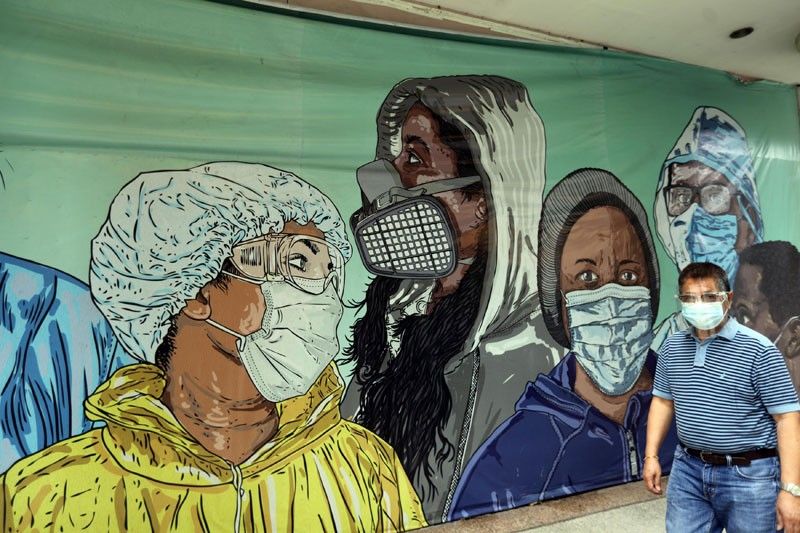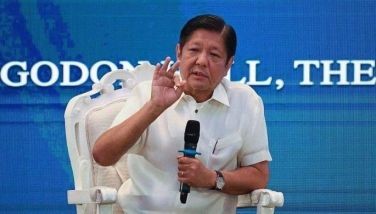Philippines last among 121 countries in COVID-19 recovery index

MANILA, Philippines — The Philippines dropped to the lowest rank in the latest index covering 121 countries released by Nikkei Asia which looks at COVID-19 pandemic response and recovery.
With a score of 30.5, the Philippines placed at the bottom of the Nikkei COVID-19 Recovery Index, which ranks countries by gauging infection management, vaccine rollout and social mobility at the end of each month.
A country with a higher ranking shows it is closer to bouncing back from the pandemic through its low number of COVID-19 cases, better vaccination rates and less mobility restrictions.
In the previous index released by Nikkei Asia last month based on data as of Aug. 31, the Philippines ranked second to last among 121 countries.
Among the Association of Southeast Asian Nations (ASEAN), Indonesia ranked the highest in the latest index as it took 54th place.
It was followed by Singapore (70th), Cambodia (76th), Malaysia (102nd), Myanmar (105th), Thailand (109th), Vietnam (118th) and Laos (120th).
Malta, which got a score of 73, topped the index.
China, which ranked first since the index was first released in July, fell to ninth spot.
Nikkei Asia’s report on the latest COVID-19 Recovery Index said the Philippines has seen daily new cases drop after hitting the second highest level on Sept. 29, falling below 10,000 on Tuesday for the first time since August.
“But less than 30 percent of the population is vaccinated, low even among ASEAN countries,” it said.
Nikkei Asia also cited the Philippines’ pilot of granular lockdowns in Metro Manila last month which allowed the easing of some restrictions, but kept the stay-at-home orders for those below 18 and above 65 years old.
“The country is gradually easing restrictions on businesses to revive the economy, allowing gyms to reopen and increasing restaurant dining and salon capacities for vaccinated individuals,” it noted.
Palace reacts
In response, Malacañang echoed the World Health Organization (WHO)’s recent statement that the Philippines has a “very good comprehensive plan.”
“Regarding Nikkei, I won’t answer that anymore but I will just cite what the WHO country and regional representative said... I will start with the statement of WHO Country Representative Rabindra Abeyasinghe: ‘Don’t be discouraged by the fact that you have a lot of cases being reported nationally, that is an acknowledgement of the fact that you have expanded your testing capacity,’” presidential spokesman Harry Roque Jr. said in a statement.
Roque said Abeyasinghe had also mentioned that the Philippines has one of the lowest proportions of fatalities in the region, an indication that the country’s hospital capacity has expanded.
“This is what the WHO country representative said: ‘I believe that the Philippines has a very good comprehensive plan. What we are concerned about is oftentimes the actual rollout phases (or) challenges although you planned very well,’” the Palace spokesman said.
Noting that social mobility was one of the indicators of the survey, Roque said the Philippines has adopted measures to promote livelihood during the pandemic.
“We are piloting various measures including localized lockdown and alert levels to prevent total wide scale lockdowns that prevent us from returning to normal,” he said.
“While we are on lockdown, we can’t go back to our previous setup. But we are giving priority to livelihood and as much as possible. We are opening the economy, which is the subject of intense debates in the IATF (Inter-Agency Task Force for the Management of Emerging Infectious Diseases). But we hear the appeal of the majority that they should have livelihood,” he added.
Metro Manila is under Alert Level 4 until Oct. 15.
Department of Health (DOH) Undersecretary Maria Rosario Vergeire said the Nikkei Asia survey was conducted in September, the peak of the Delta variant in the Philippines.
“When they were measuring the infection rates, that was the time when the number of cases in our country is really higher compared to other countries, whose peak had passed,” she said.
Vergeire said vaccination was also affected by the increase in the number of cases in the country.
“But of course, at the end of the day, we are boosting the vaccination drive. We shifted our policy so we can reopen our economy and of course, we are seeing the lowering of cases and we are managing well because our deaths are still below that of the global average,” she added.
- Latest
- Trending






























